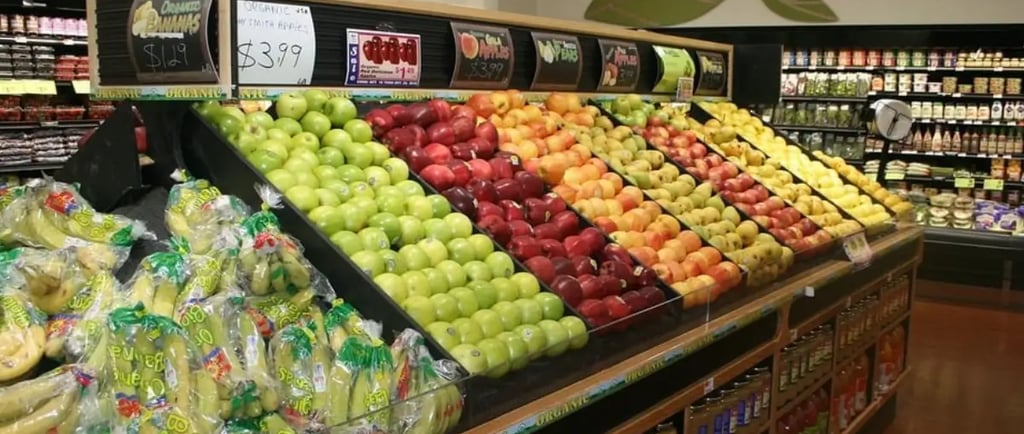Why European Supermarkets Are Becoming Symbols, Not Just Stores
From Lisbon to Leipzig, supermarkets are facing cultural resistance and shopper demands for local identity. Europe’s retail model is being reshaped.
SUPERMARKET


From Lisbon to Leipzig, Supermarkets Are Facing a Retail Identity Shift
Europe’s supermarkets are changing — but not in the way you’d expect.
The pressure isn’t just from inflation or labor shortages. From Portugal to Germany, a deeper transformation is underway. Shoppers aren’t just pushing for lower prices or faster queues. They’re demanding something more human: stores that reflect community, character, and connection.
Lisbon: Cracking Down on Tourist Mini-Markets
Earlier this year, the Lisbon City Council introduced new zoning laws to restrict tourist-oriented mini-markets in heritage neighborhoods such as Alfama, Graça, and Bairro Alto. The goal, according to the Diário de Notícias, was to preserve urban cohesion.
“These shops sell the same six snacks and four types of beer,” said Marta Nogueira, a resident activist. “They’re not local — they’re just legal.”
Chains like Continente and Pingo Doce are complying, but their real estate partners have lobbied for leniency — especially in areas dense with short-term rentals.
Leipzig: Urban Farms Come Inside the Supermarket
In Germany, the city of Leipzig is piloting new retail models. In the district of Plagwitz, a mid-sized supermarket now sources more than 50% of its produce from Community Supported Agriculture (CSA) within 30km.
“The lettuce came in at 7 a.m.,” said Jonas Heller, a former REWE employee turned store manager. “You can still smell the soil.”
The model is part of a wider trend tracked by Germany’s Bund Ökologische Lebensmittelwirtschaft (BÖLW), advocating shorter food chains and consumer traceability.
Madrid: When Automation Meets Worker Walkouts
In Spain, automation is colliding with labor politics. A high-profile walkout at an Alcampo store near Atocha station was triggered by what unions called “aggressive automation.” The story broke via El País, with footage quickly trending under the hashtag #SuperMercadoSinAlma.
“They want machines to replace jobs, but not prices,” said Lorena Gil from Spain’s Retail Workers Collective.
Shoppers online echoed frustrations: self-scanning errors, longer queues, and less human contact — a far cry from the promised convenience.
Netherlands: Nostalgia Is Back — as Strategy
In the Netherlands, two major chains are taking opposite paths. Jumbo is doubling down on speed with its new “Tempo” microstores. Meanwhile, Albert Heijn has quietly reopened a retro-style store in suburban Rotterdam, featuring 1960s layouts and in-store bakeries.
“People don’t want retro — they want rhythm,” said Lisette van den Berg, a retail anthropologist at Utrecht University.
It’s nostalgia, yes — but used deliberately as a brand strategy. A subtle counterweight to the race for retail frictionlessness.
Bordeaux & Bucharest: Supermarkets With Soil and Schools
In France, Carrefour has launched an experimental hypermarket near Mérignac that includes a community orchard and greenhouse, created with support from Les Jardins Respectueux. Local schoolchildren maintain part of the grounds as part of an eco-curriculum.
Meanwhile, in Romania, Mega Image has rolled out its “Green Belt” initiative in Bucharest suburbs — planting native trees, adding public benches, and integrating safe walkways into new store sites.
According to INSEE, Bordeaux’s pilot store saw a 17% rise in footfall and a 39% increase in average shopper dwell time over the past 12 months.
Conclusion: Retailers Can’t Ignore This Emotional Shift
A recent Forrester Europe report found that 58% of European shoppers now value a store’s “social footprint” as much as price. That’s nearly double what it was in 2021.
Across the continent, the supermarket is no longer just a commercial zone. It’s becoming a space of memory, protest, and civic meaning.
And whether it's Lisbon’s zoning fights or Bordeaux’s school-run orchards, one trend is clear:
Retail is no longer passive. It’s participatory.
And Europe’s shoppers are ready to shape what comes next.
